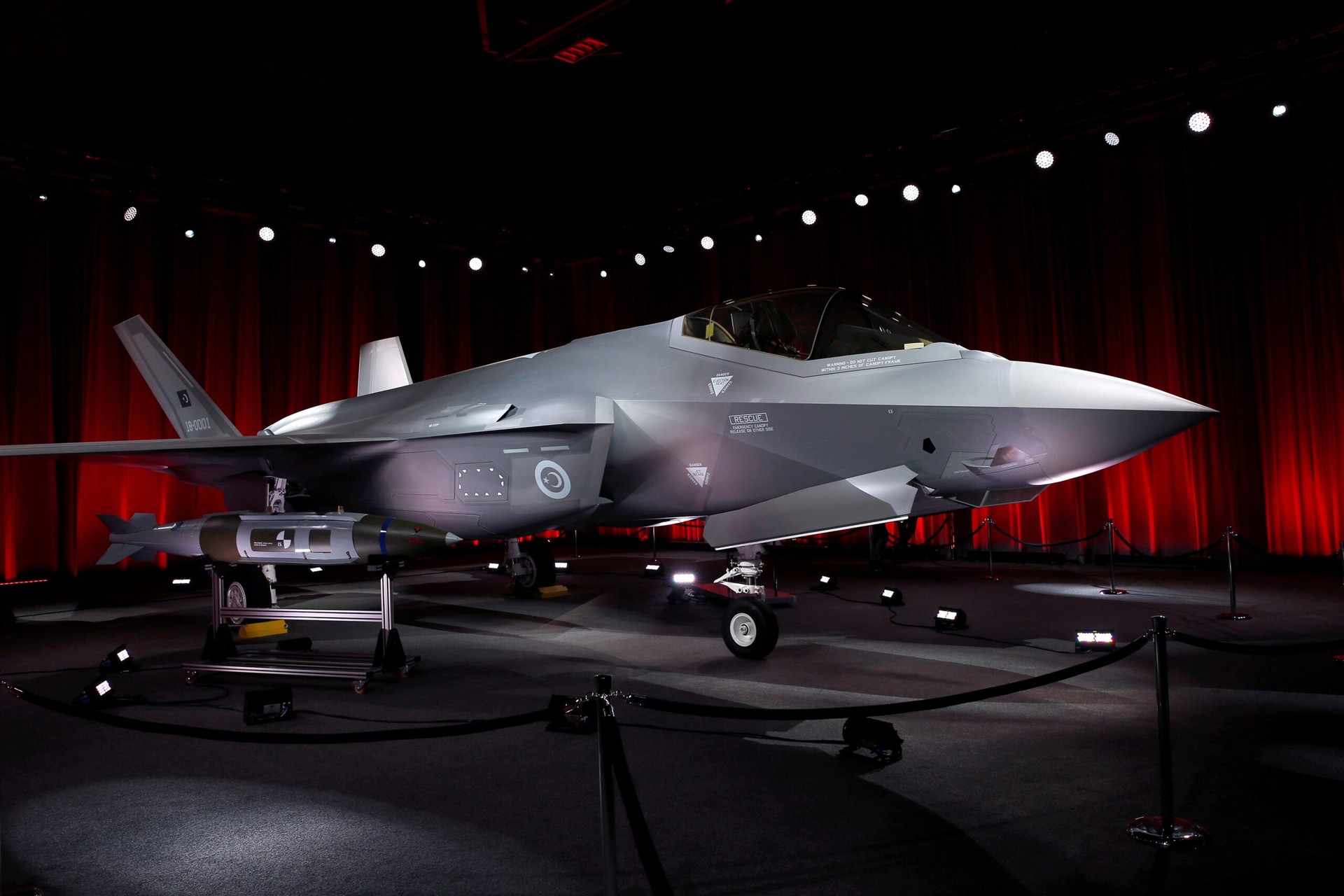
Türkiye's removal from the F-35 Joint Strike Fighter (JSF) consortium has been extensively debated by analysts and experts, focusing on Türkiye's losses.
We will explore the alleged losses and potential gains, if any, that the country may have experienced following its removal from the program, but first let's take a look at what happened, and how did Türkiye end up in this situation?
Türkiye joined the F-35 JSF program in 2007 as a level 3 partner. Ten Turkish defense and aerospace companies, along with numerous subcontractors, have supported the development and production phases of the F-35 fighter jets as part of Türkiye’s role in the program.
In 2012, Murad Bayar, then head of the Presidency of Defence Industries, gave an interview to the Turkish newspaper Milliyet on May 22, 2012, and announced that representatives of major companies in the global aerospace and defense industry had come together in Izmir, hosted by the Aegean Free Zone (ESBAS).
https://twitter.com/SavunmaSanayii/status/204895656899379200
The Official Twitter Page Secretariat of Defence Industries also shared that news.
"Sikorsky, Boeing, General Dynamic, SAAB, Fokker Elmo, BAE Systems, Safran, Dassault, Northrop Grumman, Thales, Rolls Royce and Lufthansa Technical", he said, adding that the Secretariat for Defence Industries and the Izmir Development Agency had also supported the conference.
In that interview, Bayar said, "The F-35 project is significant, with Turkish industry securing a nearly $8 billion share. There's also an investment in ESBAS, focusing on aircraft engine production, with manufacturing taking place in Eskisehir and Istanbul."
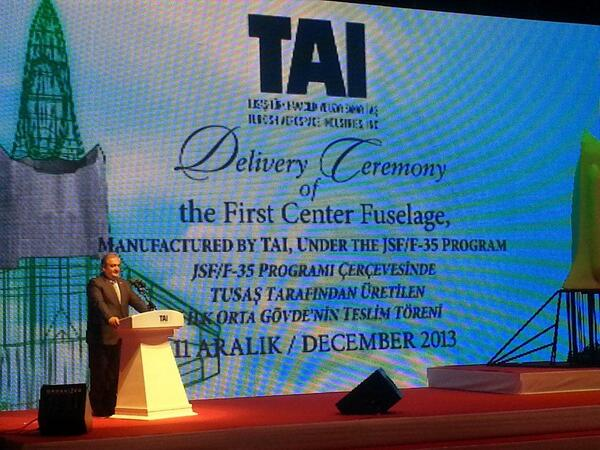 The delivery ceremony of the first center fuselage produced by TAI/TUSAS within the framework of the JSF-F35 Program was held in 2013.
The delivery ceremony of the first center fuselage produced by TAI/TUSAS within the framework of the JSF-F35 Program was held in 2013.
In May 2013, Lockheed Martin estimated that Turkish companies could potentially benefit from up to $12 billion in contracts related to the F-35 project. This figure could have been significantly higher had Turkey remained a partner in the F-35 consortium. To date, over 1,000 F-35s have been produced.
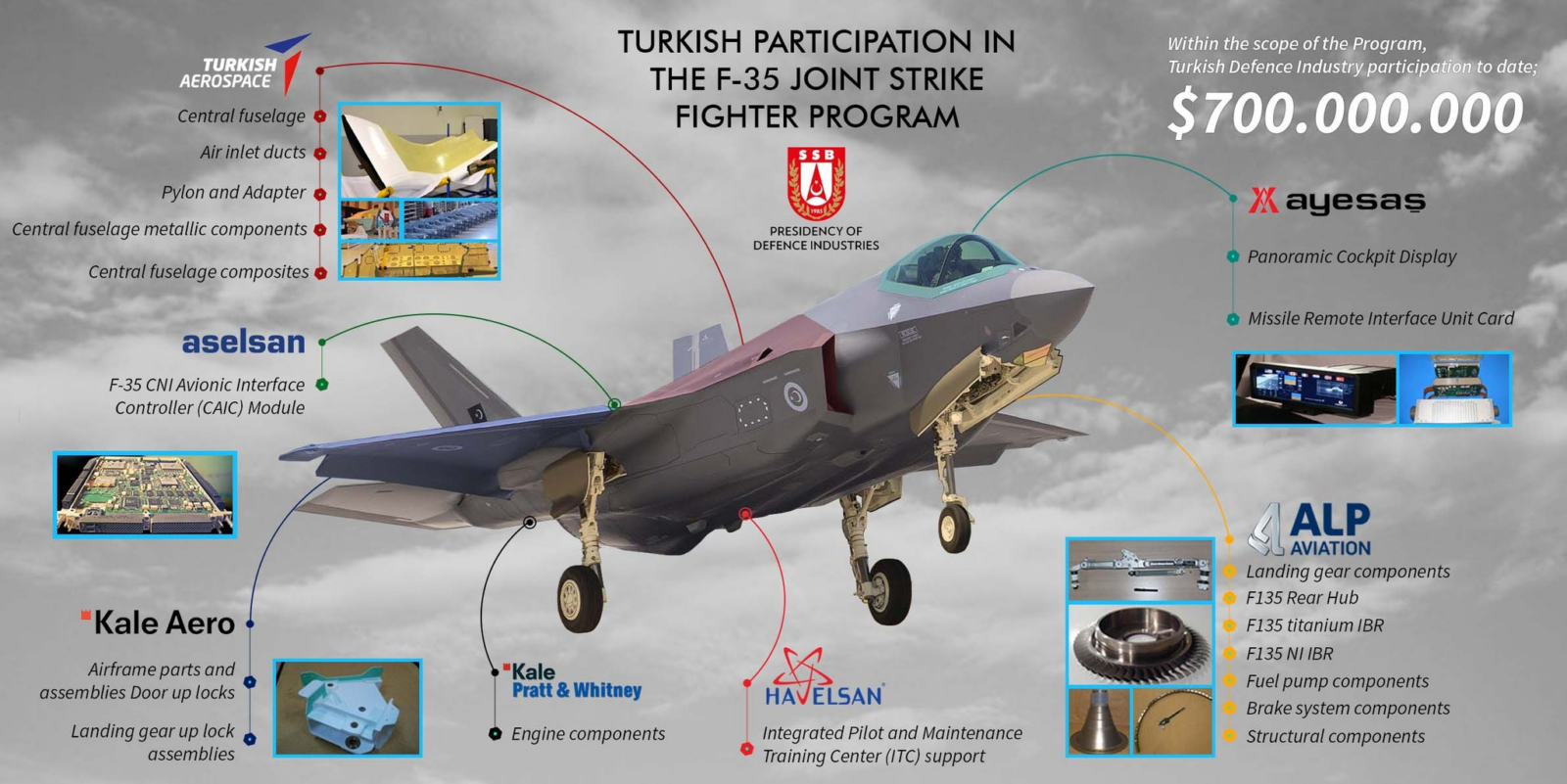 An official chart by the Turkish Secretariat of Defence Industries.
An official chart by the Turkish Secretariat of Defence Industries.
Türkiye placed an initial order for 30 F-35 Lightning IIs in 2014.
"We will start F-35 orders either this year or the next. Right now, it is likely to be next year," Bayar told reporters.
"We plan to initially order two, with delivery expected between 2017 and 2018, depending on the order schedule."
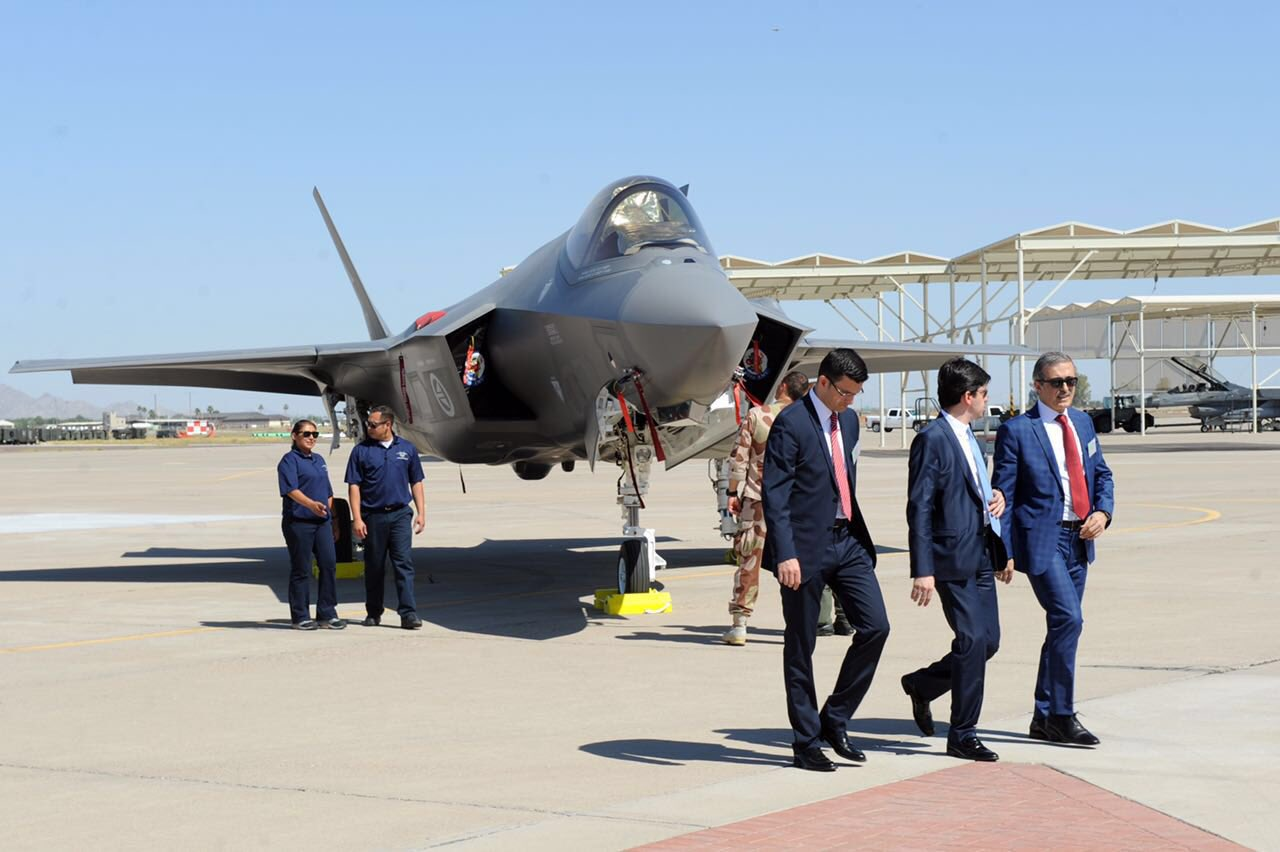
On May 26, 2016, the official Twitter page of the Secretariat of Defence Industries announced, "Our Undersecretary Ismail Demir and his delegation attended the high-level partners' meeting of the F-35 Joint Production Project."
On Nov. 20, 2016, the Turkish Ministry of National Defense announced the purchase of 24 additional F-35 fighter jets, supplementing the existing order of six, to bolster the Turkish Air Force.
Türkiye launched Operation Euphrates Shield on Aug. 24, 2016, to combat Daesh in Syria. This occurred as the country was grappling with multiple challenges, including a coup attempt by the FETO terrorist organization thwarted by the people and heroic security forces. The exhausted nation was struggling with multiple crises but continued to fulfill its international commitments.
The Ministry of National Defense announced that "The SOM-J, a precision-guided smart missile with an armor-piercing warhead, is being integrated into the 5th generation F-35 fighter jet."
https://twitter.com/tcsavunma/status/819883908535873536
On Oct. 24, 2014, Roketsan and Lockheed Martin partnered to develop, produce, and market the SOM-J missile, a variant of the SOM cruise missile specifically designed for the F-35's internal weapon bays. The F-35 will also carry the Joint Stand-Off Weapon (JSOW), developed by Kongsberg Defense & Aerospace and Raytheon.
Roketsan and Lockheed Martin announced a partnership at the 2015 DSEI International Defense Industry Exhibition to integrate the Turkish-made SOM-J cruise missile into the F-35's internal weapon bay.
Prior to this development, the AGM-154A/C JSOW was the only cruise missile capable of being carried internally by the F-35.
Former Roketsan General Manager Selcuk Yasar stated in April 2018 that the SOM missile carries a price tag exceeding $1 million. Given that over 1,000 F-35s were planned for production and considering the SOM-J as one of only two available internal weapon options, the potential market for this Turkish-made missile was substantial. The F-35 was capable of carrying four SOM-Js in Stealth mode, that is in Low Radar Cross Section (RKA) mode.
In a scenario where we assume a price of $1 million, integration into even just 100 Turkish Air Force aircraft could potentially generate a revenue of $400 million for the program.
The first F-35A Lightning II intended for the Turkish Air Force Command made its inaugural flight on May 10, 2018, at Lockheed Martin’s Fort Worth facility. Piloted by U.S. Navy Test Pilot Cmdr. Tony Wilson, the F-35A AT-01 (serial 18-0001) took off at 2:47 p.m. local time and landed at 4 p.m. During the one-hour and 15-minute flight, the aircraft was escorted by an F-16.
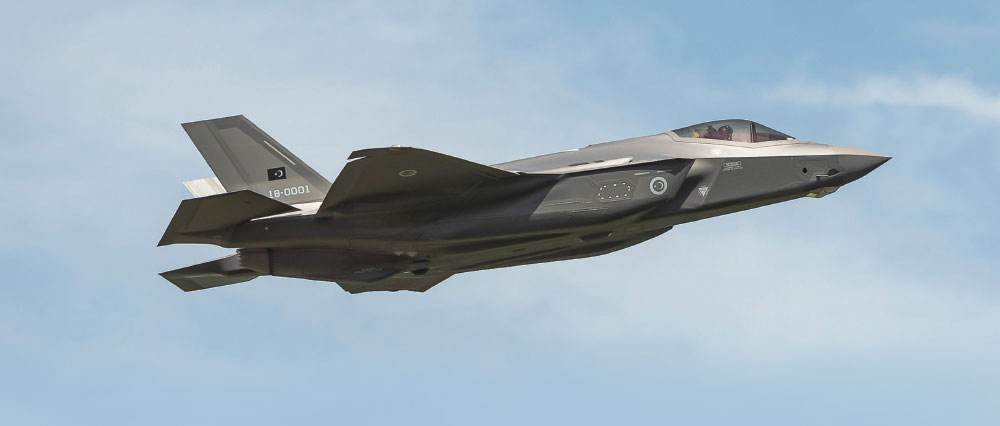
On April 26, 2018, U.S. senators James Lankford, Jeanne Shaheen, and Thom Tillis introduced a bipartisan bill aimed at halting the transfer of F-35 aircraft to Türkiye.
The bill also sought to block Türkiye's role as a maintenance depot for the F-35 program. "Türkiye’s strategic decisions regrettably fall more and more out of line with, and at times in contrast to, U.S. interests," stated Sen. Lankford.
In response, Turkish officials indicated that any move to block the F-35 purchase would result in retaliation. Then-Foreign Minister Mevlut Cavusoglu stated that Türkiye would react if the U.S. enacted a proposed law halting weapons sales.
On May 24, 2018, the House of Representatives in the U.S. Congress passed its version of a U.S. $716 billion defense policy bill including a measure to prevent Türkiye from purchasing Lockheed Martin F-35 jets.
In 2019, Türkiye was removed from the F-35 program due to the country's acquisition of S-400 missile systems from Russia, thus excalating its tensions with the West, particularly U.S.
Patrick Shanahan, a former U.S. federal government official who became acting U.S. defense secretary in 2019, said the Pentagon's plan includes halting the training of Turkish pilots at Luke Air Force Base in Arizona and Turkish maintenance personnel at Eglin Air Force Base in Florida.
"If Türkiye acquires the S-400s, as we discussed in our phone call on May 28, 2019, our countries should develop a plan to halt Türkiye's participation in the F-35 program," Shanahan said in a letter to then-Defense Minister Hulusi Akar on that time.
And so it happened. Türkiye was removed from the F-35 JSF program. As a result, Turkish military personnel were no longer receive training for the F-35, and the aircraft already delivered to Türkiye were being stored in the United States.
On May 30, 2020, Ismail Demir, then head of the Secretariat of Defense Industries, said: "Without Türkiye, this would cost an additional $8 million to $10 million per aircraft to the program and an additional $500 million to $600 million in production costs."
Since then, hundreds of aircraft have been ordered by various countries. This means that there is still a cost-effective production network, and it is still possible to operate it.
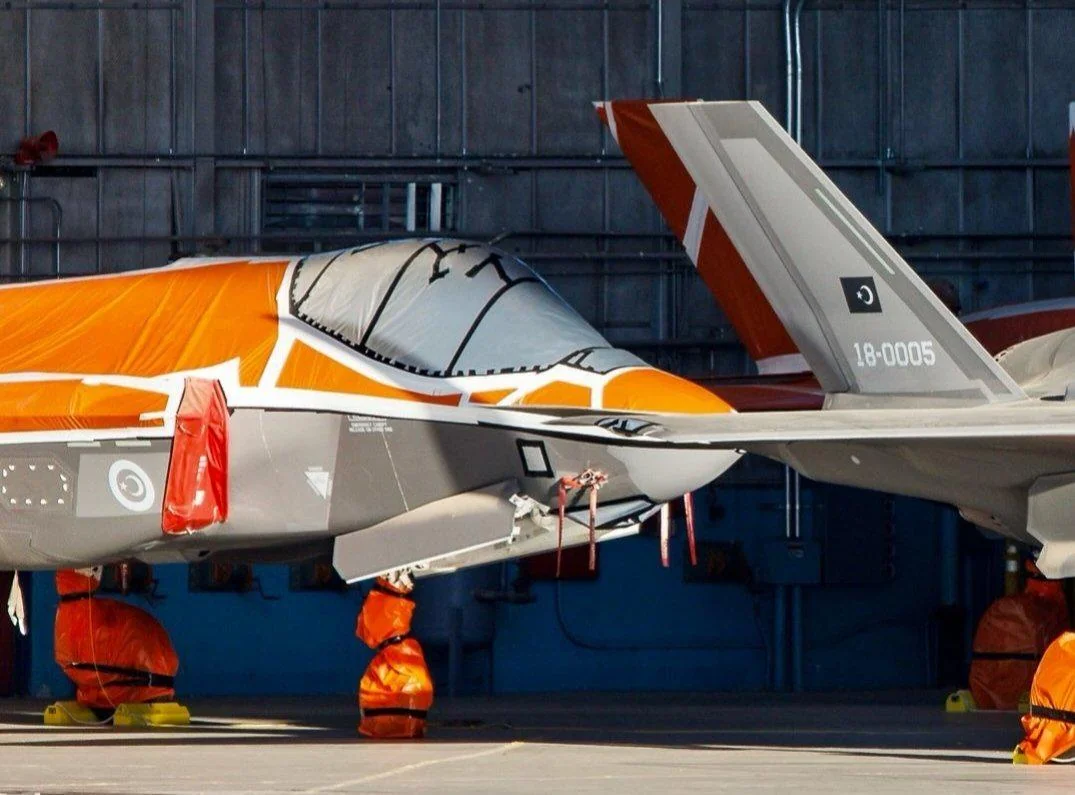
Türkiye was a significant contributor to the F-35 program, supplying 937 components. Of these, a crucial 400 parts were exclusively produced by Turkish companies.
The U.S. Department of Defense "disciplinedly and gracefully terminated" existing contracts with Turkish firms in early 2020.
Vice Admiral Mat Winter, then-F-35 program manager, had previously warned that cutting Türkiye out could delay the delivery of 50-75 aircraft by more than two years.
Also, Ellen Lord, former vice president of the National Defense Industrial Association, said the Pentagon was working to minimize disruptions by identifying new suppliers, mainly from the United States. The U.S. agreed with new parts manufacturers, ensuring minimal disruption to the project.
“If we can work to our timelines with the Turks, we would have no major disruptions and very few delays,” she said back then.
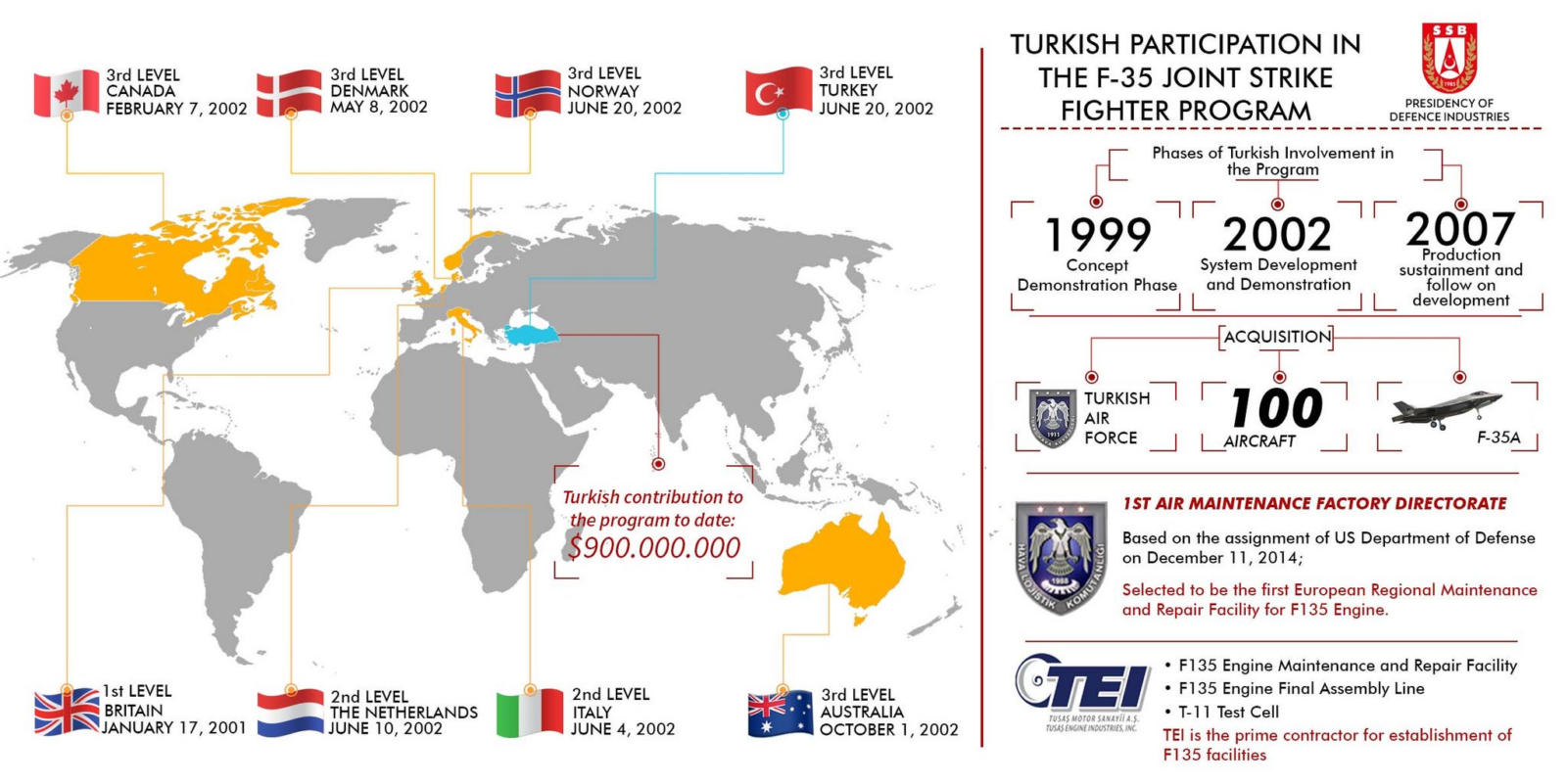 An official chart by the Turkish Secretariat of Defence Industries.
An official chart by the Turkish Secretariat of Defence Industries.
The Turkish defense industry plays a significant role in supporting Lockheed Martin and Pratt & Whitney by contributing to the sustainment of F-35 aircraft and the production and maintenance of the F135 turbofan engine.
Türkiye has received authorization to produce and assemble its own F135 engines and has been chosen to host the first European Regional F135 Engine depot overhaul capability. Both the engine production and overhaul activities are set to occur at the 1st Air Maintenance Factory Directorate (1st AMFD), formerly known as the 1st HIBM, located in Eskisehir.
In addition, Turkish Aerospace Industries (TAI) has been designated to represent the Turkish Armed Forces' organic depots within the Autonomic Logistic Global Sustainment (ALGS) system, while Havelsan has been appointed as the Turkish Integrator for the National Integrated Training Center (ITC).
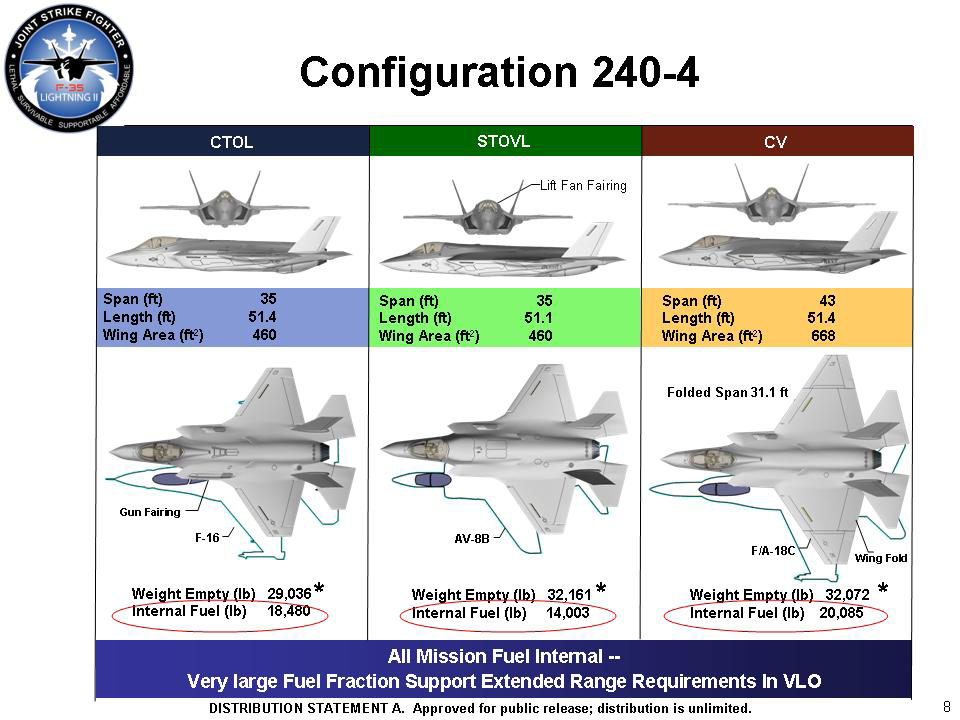
Türkiye had ambitions to acquire up to 100 F-35A conventional-take-off-and-landing (CTOL) variant aircraft by 2031. The country placed its first order for 14 F-35As in a phased manner (2+4+8). The initial two F-35As, equipped with the Block 3F configuration, were ordered in 2014 under LRIP-10.
Subsequently, the Defense Industry Executive Committee (DIEC), Türkiye's top defense procurement authority, approved the acquisition of an additional four aircraft under LRIP-11 during its Jan. 7, 2015 meeting, followed by eight more F-35As under LRIP-12 in a March 9, 2016 meeting. After this meeting, the Undersecretary Ismail Demir announced that the total value of the purchase was $1.4 billion.
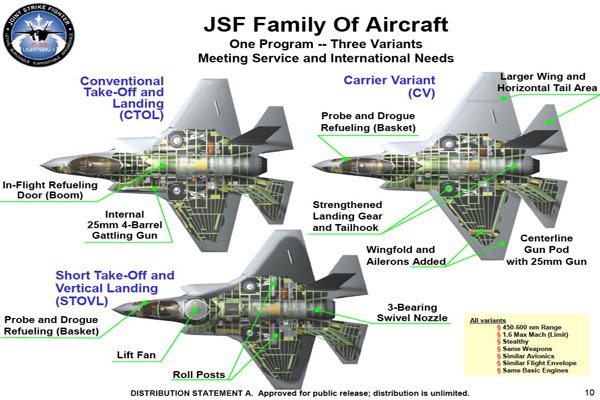
The joint memorandum of understanding, which was opened for participant countries' signatures in 2006 and signed by Türkiye on Jan. 26, 2007, was canceled. Türkiye was excluded from the new agreement signed on July 17, 2019.
After the removal, the Turkish Foreign Ministry issued a statement, "The White House and the US Department of Defense announced today (July 17) that Türkiye will be removed from the F35 program due to our procurement of the S-400 air defense system."
This unilateral step is incompatible with the spirit of alliance and is not based on any legitimate justification. It is unfair to exclude Türkiye, one of the main partners of the F35 program, and the claim that the S-400 system will weaken the F-35 is invalid. The fact that our proposal to establish a working group on this issue with the participation of NATO was left unanswered is the most obvious indication of the prejudice on the US side and the lack of will to resolve the issue in good faith within its own dimensions.
Turkish Foreign Ministry
"The US should show the importance it attaches to Türkiye's friendship not only in words but also in deeds, especially in the fight against the terrorist organizations Daesh, PKK/PYD/YPG and FETO," the Turkish foreign minister said, adding, "We call on the United States to reverse this mistake that will cause irreparable damage to our strategic relations."
In 2021, Turkish President Recep Tayyip Erdogan said, "I cannot honestly say that there is a healthy process in Turkish-American relations. Why? Look, we bought F-35s, we paid $1.4 billion and these F-35s were not delivered to us. America must first settle this once and for all. Using the S-400 issue as an excuse and not giving us the F-35s is, first and foremost, to show an identity neither in terms of diplomacy nor in terms of relations between states. America needs to fix this once and for all."
On Feb. 20, 2021, Türkiye enlisted the services of the international law firm Arnold & Porter to help protect its legal rights in continuing its involvement in the U.S.-run F-35 aircraft program.

In 2024 U.S. National Security Council spokesperson John Kirby told reporters at the White House, "There's no change to our view that the F-35 program for Türkiye is incompatible with their use of the (Russian) S-300 (Note: Türkiye does not operate S-300 AD's) and S-400 air defense systems. So we're still having those discussions, and should Türkiye be able to resolve our concerns about that, then there could be a restoration of movement into the F-35 program."
Multiple meetings have been held between Turkish and U.S. authorities about the F-35.
In 2024, Erdogan also said, "Our current plan, our program is locked on the F-16 rather than the F-35. In our meetings with both the congress and the senators who came to us, we talked about what steps we can take with the F-16s."
To this day, the F-35 issue remains unresolved. Experts on the topic suggest that while it is unlikely that Türkiye will rejoin the F-35 project as a full partner, it may still be able to acquire a limited number of F-35s, though not the originally planned 100 units. Türkiye's F-35 journey appears to be ongoing.